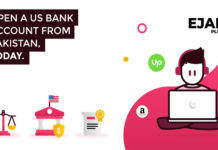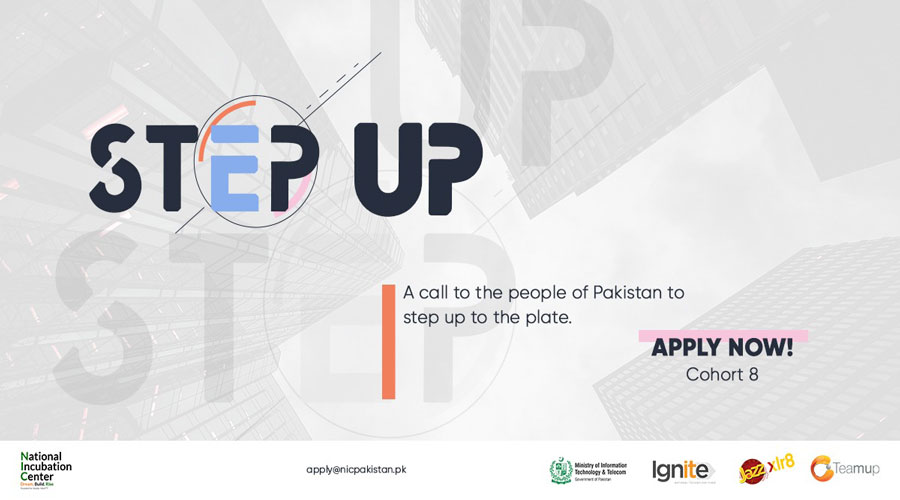The buying and selling of digital assets, such as websites and apps, for profit is a rapidly growing industry worth millions of dollars. This practice, known as flipping, operates similarly to flipping physical assets like real estate or cars. The idea behind flipping is that it is more efficient to improve an existing asset than to build a new one from scratch, saving time and money. This in a new phenomenon and in Pakistan very few persons are embracing Digital Assets Flipping, So you can try you luck into it.
In the case of digital assets, individuals seek out assets that are already generating revenue and make improvements to increase their value for resale. Flipping digital assets can be a profitable venture, especially for those without the financial means to invest in real estate or other expensive investment options. Additionally, building a business from the ground up requires significant amounts of time and resources.
Is Technical Expertise Required?
Having technical skills as an app or web developer is not necessary to seize this opportunity. The only requirement is to select and invest in a website or application that is already generating profits.
What is the key to succeeding in flipping digital assets?
The secret lies in identifying digital assets that have untapped potential and knowing precisely what modifications are necessary to increase their marketability. Adhering to this principle can yield a return on investment (ROI) of up to 24% when flipping digital assets.
One investor, John Chen, serves as an excellent example of this strategy. In 2019, he purchased the online business Blush & Bar from Flippa for $7,500. After two years of improving the business, he was able to sell it on Flippa for an astounding $550,000. With the right tools and a discerning eye, you can identify online businesses with considerable potential, similar to Blush & Bar, that you can flip in the future.
Typically, high-potential online businesses are available for purchase for approximately $10,000 to $15,000. It is a worthwhile investment because these businesses can be resold for up to 20 to 40 times their monthly profits within a year.
Where Can One Buy or Sell Digital Assets?
Digital assets can be bought or sold through various intermediaries or platforms, which are commonly used by investors.
1. Brokerage Firms:
A broker who flips websites has various duties which include marketing the seller’s website, offering an estimated valuation, showcasing the website to prospective buyers, conveying buyer offers to the seller, facilitating negotiations between both parties, and providing post-sale assistance to both the seller and buyer. It’s important to note that utilizing a brokerage firm to purchase or sell a digital asset incurs an extra fee.
2. Private Communities for Digital Asset Trading:
Closed groups are exclusive communities dedicated to buying and selling digital assets. Typically, they consist of experienced and professional investors who seek long-term investment prospects. Novices may not be aware of such groups due to their restricted access.
These groups are not open to the public, and transactions usually involve high-profile investments. If you are a serious buyer seeking camaraderie among like-minded investors, closed groups provide an excellent avenue for community support.
3. Online Marketplaces Worldwide:
Specialized platforms for buying and selling digital assets are available, managed by professionals who oversee the entire transaction process. Their duties include ensuring transaction security, conducting background checks on both parties, and determining market value.
There are many user-friendly platforms which offers a wealth of information, including an extensive database searchable by price, asset age, or category. Here are some of the assets you can buy and sell
-
Apps
-
Digital services
-
eCommerce sites
-
Affiliate sites
-
Amazon FBA stores
-
Domains
-
SaaS businesses
-
Online businesses
-
Blogs
4. Public Marketplace Sites:
Online forums that facilitate the buying and selling of websites, also known as public marketplaces, are an option worth considering if you’re new to the scene and prefer to browse casually. Some examples of such sites are Webmaster Sun and Warrior Forum.
Public marketplaces are different from closed groups or paid platforms, as they are typically free and open to everyone, attracting a considerable amount of traffic that can benefit sellers. However, the absence of a thorough screening process is a common drawback, and it is crucial to exercise caution when dealing with unfamiliar buyers or sellers. Additionally, there is no guarantee of transaction security.
5. Direct Contact:
One option for selling your product or service is to directly reach out to site owners or buyers if you have a strong network of developers or content creators. However, this method may not be as effective if you are not well-established in your field or if you are new to the industry.
How to Flip Digital Assets ?
The industry of buying and selling digital assets has grown into a multi-million dollar business over the past few years, with some funds focusing exclusively on this niche. Investors invest their money in the fund, and fund managers then hire a team to manage their site portfolio and sell them at a profit, resulting in massive returns for investors.
Some investors prefer to purchase digital assets directly and either manage or improve them themselves or hire a team to manage them. It is possible to either focus on one digital asset or diversify by working on several simultaneously. If you are a novice, the first option may be better for you. Depending on your proficiency, flipping digital assets can be a side gig or a full-time business.
While flipping assets presents a promising investment opportunity, it also comes with its own set of risks like any other investment. Let’s take a closer look at the process.
Step 1: Set Your Strategy, Budget, and Timeline
To begin with, you must establish your strategy, budget, and timeline before taking any further steps. This will assist you in maximizing your earnings and staying on track with your objectives.
Strategy:
When formulating your strategy, there are several factors to consider, including:
- The niche you intend to target
- The changes you plan to make
- The cost of implementing these changes
- The length of time required to implement them
- The skills you’ll need to succeed
- Other resources, such as equipment and software, that you’ll require
- Whether you want to focus on one asset at a time or several at once
Bear in mind that you should select a niche that is both lucrative over time and that interests you to keep you motivated.
Timeline:
Your deadline may be determined by a fixed number of months or by achieving a revenue goal. For instance, you may resell a flipped blog after:
- 12 months of improvements
- Earning an average of X amount within a quarter
This guarantees that you don’t waste too much time and money on a digital asset that isn’t profitable.
Budget:
There is no set figure for your budget, as it depends on your strategy and objectives. If you have limited funds, you may focus on purchasing smaller digital assets and making the necessary repairs yourself. Alternatively, if you have more capital, you may aim to flip larger online businesses.
In conclusion, flipping digital assets is a high-risk enterprise that may result in the loss of your entire investment, so choose carefully.
Step 2: Find an Asset in Your Desired Niche
After determining your budget and strategy, the next step is to pinpoint assets that offer high potential for growth. A helpful guideline is to seek out assets that are already generating revenue but can be further optimized with minor modifications.
Additionally, consider the following tips when selecting a promising digital asset: prioritize assets that necessitate only small adjustments rather than significant overhauls, look for sites that have naturally built communities, opt for sites with robust domain names, and consider acquiring sites owned by individuals as they typically entail lower costs compared to those managed by professional teams.
Step 3: Negotiate and Purchase the Asset
To potentially save money, consider negotiating a sale with the asset owner before making an outright purchase. Research the asset’s analytics and determine a reasonable price range to use in negotiations. Remember to approach the process with patience and realistic expectations.
If you decide to proceed with the purchase, be cautious when dealing directly with clients without the help of established brokers. Use one of the listed platforms to make the purchase. The contract should include the following details:
- Domain Name
- Business Name
- Registration Details
- Business Information
Before signing the contract, make sure all third-party software, subscriptions, and other important details are updated with your information as the new owner.
Step 4: Enhance the Asset Based on Your Strategy and Timeline:
After acquiring the asset, begin implementing improvements based on your strategy and timeline. Depending on the nature of the acquisition, the enhancements can be related to various aspects such as:
- Content
- Search Engine Optimization (SEO)
- Conversion Rate Optimization (CRO)
- Technical Aspects
- Features
- Design
- User Experience (UX)
- Speed
- Traffic
The objective is to elevate the asset’s quality to boost its monthly earnings and overall value. If you aim to flip an eCommerce website, there are various ways to increase its value:
- Enhancing Traffic: This can be achieved by incorporating SEO-optimized landing pages and targeting competitive keywords. You can refer to “How to Drive More Organic Traffic to a Shopify Store for Free” for additional insights on how to accomplish this.
- Enhancing User Experience: Consider using a mobile-friendly theme.
- Enhancing Click-Through Rates and Conversions: This can be achieved through CRO (conversion rate optimization).
- Enhancing Profitability: Consider utilizing affiliate marketing, advertising, offering digital products, and marketing attractive subscription services.
You have the option of implementing these changes yourself or hiring a team to do so. Freelancers are an excellent resource, especially for per-project flipping. On the other hand, for long-term flipping or more extensive projects, some individuals may prefer to hire a permanent team. However, employing full-time staff may result in higher labor costs.
Step 5: Sell the Asset at a Profit:
Once you have successfully enhanced the value of your asset, you can proceed to sell it to another investor at a much higher price. It is important to remember that your effort and time invested in the project should not be undervalued, so ensure that you make a reasonable profit.
If you decide to sell the asset, there are some tips to consider in order to increase the chances of selling immediately. These include creating descriptive listings, developing a pitch deck that highlights the strengths and potential of the asset, presenting relevant information without fluff, and being approachable and responsive to potential buyers.
Alternatively, if you prefer a consistent income stream, you can keep the improved asset and benefit from ongoing cash flow.
How Long Does It Take to Flip a Digital Asset?
The duration of the flipping process varies from six months to two years, depending on the specific circumstances of each purchase. For instance, if you acquire a revenue-generating business or blog, you might only require a few months to enhance it. However, if you have particular goals for an app or digital product, it may take longer to improve it, especially if it has issues such as poor SEO, technical bugs, or outdated content. Additionally, most flipped assets need rebranding before relaunching.
Here are practical tips for flipping digital assets:
- Evaluate the amount of time and money you are willing to invest in the project before looking for assets to flip. Consider how much you can afford to invest because flipping assets is risky like any other investment or business opportunity.
- Be wary of online scams and fraudulent digital assets. If you buy or sell digital assets on platforms such as Flippa, they will handle the due diligence work for you. When looking for assets to flip, find out why the asset is being sold, check the backlink profile, ask for analytics and proof of revenue, and do a background check.
- Choose a niche that interests you and has the potential to earn money. It’s also advisable to pick an evergreen niche since their content remains useful for years to come.
If you’re a developer, building your own asset can be cost-effective, and you can flip it later for a profit.
Success stories of digital asset flipping include Outdoor Man Cave, Split Screen, Blue Tees Golf, Ninja Outreach, and Zone-365 Beauty.
When should you build your digital asset instead of flipping an existing one? Building your own site or another asset can be a cost-effective option, especially if you have technical skills and know-how.































